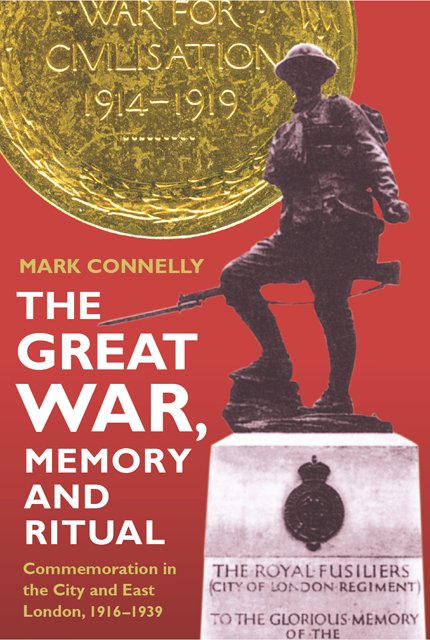2 - War Shrines: The Origins of the War Memorials Movement
Published online by Cambridge University Press: 22 March 2023
Summary
Gallipoli and the Battle of Loos in 1915 had brought the first real rumbles of war to the people of East London and metropolitan Essex. Local men took part in both. Though both campaigns, particularly Loos, were to become a part of the post-war commemoration there seems to have been little direct memorial activity at the time. Rather it was the battle of Jutland, closely followed by that of the Somme fought throughout the summer of 1916, that forced home the reality of war to most East Londoners and most Britons as well. The first memorial activity of note came out of these great struggles in the formof street war shrines. The first shrine was erected in South Hackney under the auspices of the rector in August 1916. But it took until the autumn of 1916 for the movement to really spring into life; the catalyst was an article in the London Evening News on 4 October 1916 which commended the shrines and prompted a letter from the Lord Mayor of London urging their erection across the capital. A fund was started and a standard design was published consisting of a triptych with space for the names of the dead and serving on the wings, a shelf for flowers and a centre panel containing a small calvary and Union Jack, along with a promise of financial aid to the most deserving applicants. Selfridge's, the department store, took up the cause and donated £150 to the fund and by the end of October more than 250 shrines had been erected or put in hand.
But what was the true significance of these shrines; what emotions and concepts did they embody? Crucially, the shrines reflected a desire to turn the sublime and abstract emotions of grief, pride and hope into tangible symbols; and the precedents and patterns set at this time provided the blueprint for the permanent memorials erected at the end of the war. The shrines were set up because people wanted them and needed to feel that they were doing something to remember their dead, and to provide some sort of superstitious protection for those still serving at the front.
- Type
- Chapter
- Information
- The Great War, Memory and RitualCommemoration in the City and East London, 1916-1939, pp. 25 - 35Publisher: Boydell & BrewerPrint publication year: 2001

